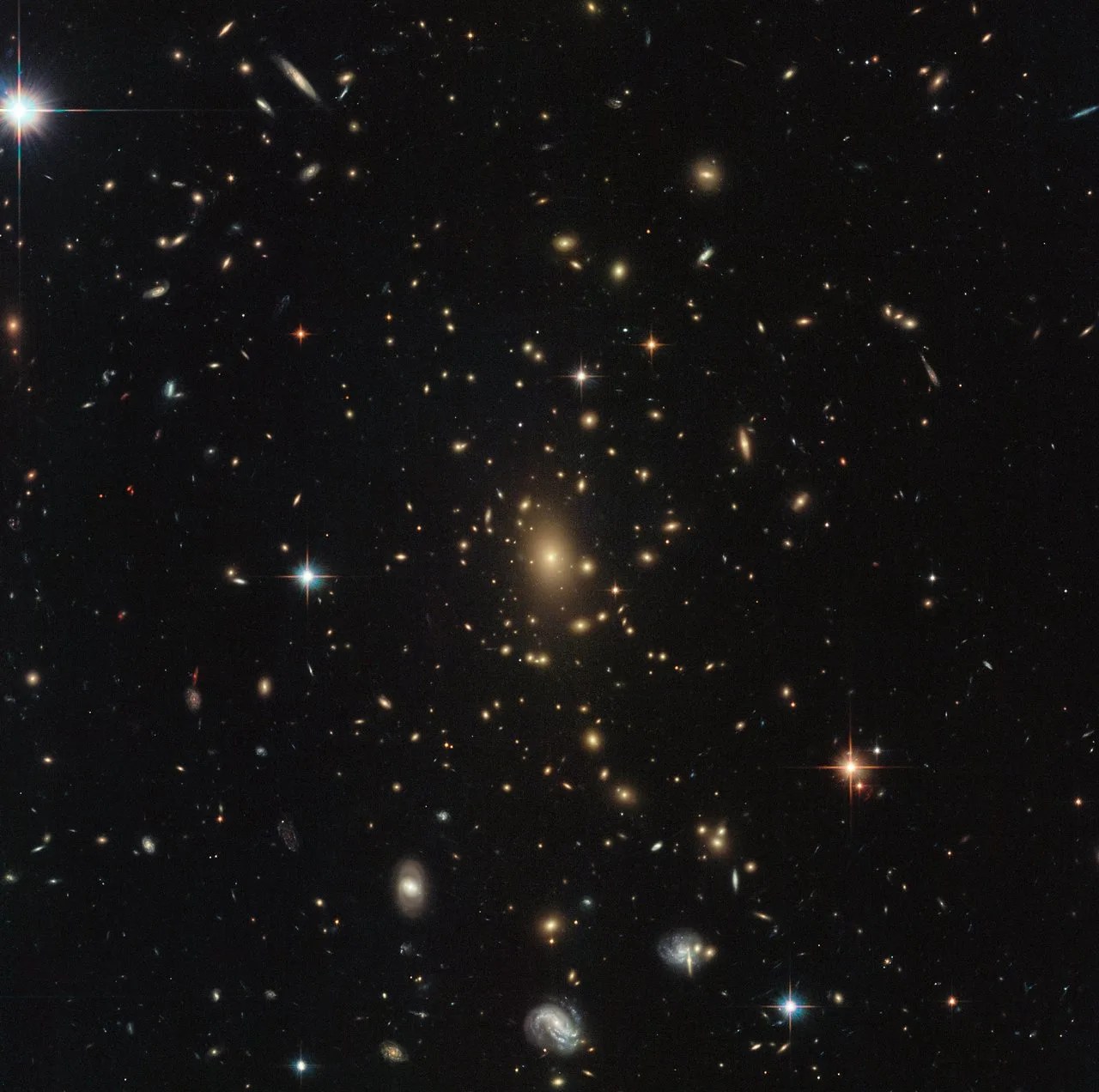2 min read

This busy image is a treasure trove of wonders. Bright stars from the Milky Way sparkle in the foreground, the magnificent swirls of several spiral galaxies are visible across the frame, and a glowing assortment of objects at the center makes up a massive galaxy cluster. Such clusters are the biggest objects in the universe that are held together by gravity and can contain thousands of galaxies of all shapes and sizes. Typically, they have a mass of about one million billion times the mass of the Sun — unimaginably huge!
Their incredible mass makes clusters very useful natural tools to test theories in astronomy, such as Einstein’s theory of general relativity. This tells us that objects with mass warp the fabric of space-time around them; the more massive the object, the greater the distortion. An enormous galaxy cluster like this one therefore has a huge influence on the space-time around it, even distorting the light from more distant galaxies to change a galaxy’s apparent shape, creating multiple images, and amplifying the galaxy’s light — a phenomenon called gravitational lensing.
This image was taken by Hubble’s Advanced Camera for Surveys and Wide Field Camera 3 as part of an observing program called RELICS (Reionization Lensing Cluster Survey). RELICS imaged 41 massive galaxy clusters with the aim of finding the brightest distant galaxies for the forthcoming James Webb Space Telescope to study.
Text Credit: ESA







